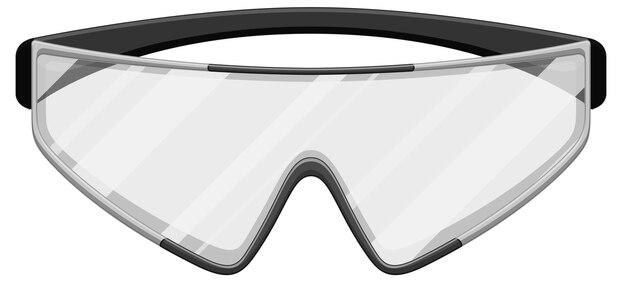Safety glasses and normal glasses are the first choices that typically come to mind for eyewear. Although both aim to correct eyesight, there are notable differences between them in terms of features, advantages, and intended applications. The following article will explore the main distinctions between safety and ordinary glasses, emphasizing their special qualities, advantages, and drawbacks as well as when to select each one depending on your needs.
Features and Advantages of Safety Glasses
Safety specs like Pentax safety glasses are a specific type of eyewear made to shield the eyes from potentially dangerous situations. They are utilized in fields where employees may be exposed to flying particles, chemicals, dust, or radiation, such as manufacturing, woodworking, and construction.?
Advantages
The outstanding impact protection provided by safety eyewear is one of its main advantages. They are composed of materials with a high impact resistance, including polycarbonate or Trivex, which can withstand flying debris or items that might result in severe eye damage. To further improve their usefulness, safety glasses frequently have extra features including anti-fog, UV protection, and scratch-resistant coatings.
Features
Furthermore, safety glasses are made to fit comfortably and don’t hurt when worn for lengthy periods. Usually, they feature snug fit, side shields, and wrap-around frames to keep particles or dirt out of the eyes from both sides. Additionally, safety eyewear is available in a variety of forms and styles, fitting a range of facial shapes and personal needs.
Regular Glasses: Benefits and Drawbacks
However, the main purpose of ordinary glasses, sometimes referred to as prescription eyewear, is vision correction. They are intended to give those with refractive defects, such as astigmatism, hyperopia, or myopia, clear vision.
Features
Prescription lenses are composed of materials like plastic, glass, or high-index materials, and are one of the key characteristics of conventional eyeglasses. These lenses are made to meet each person’s unique visual requirements, correcting refractive faults and enhancing clarity of vision. In addition, regular glasses can have different lens coatings that improve their durability and effectiveness, like anti-glare, scratch-resistant, and UV protection.
Restrictions
On the other hand, ordinary glasses are not as effective at protecting your eyes in dangerous situations. They are not made to survive impacts at high speeds or to provide protection from other possible risks like radiation or toxins. Regular glasses have a chance of breaking when dropped, which could cause eye damage. Regular glasses might not fit as tightly as safety glasses, which makes it possible for particles or dirt to get into the eyes from the edges.
Key Distinctions Between Regular and Safety Glasses
There are a few distinctions between conventional glasses and safety glasses, despite their initial similarities. It’s essential to comprehend these variations while selecting the ideal eyeglasses for your unique requirements.
Improved Lens Design for Unparalleled Safety
One of the key differences between conventional eyewear and safety glasses is how the lenses are made. Safety glasses include lenses designed to provide the best possible eye protection, regardless of the individual prescription. This corresponds to a higher degree of impact resistance than their traditional equivalents. Pentax prescription safety glasses usually have lenses made of different materials, but polycarbonate is one of the most common ones. These lenses are not only more impact resistant than conventional glass lenses, but they also have the benefit of being lighter, which helps to comfort.
Fulfilling Specific Safety Requirements
The strict degree of impact resistance that safety glasses must have—often indicated by unique insignia on the glasses themselves—sets them apart from conventional glasses. Lenses must pass and undergo extensive testing to meet renowned safety standards for eyewear, such as those established by the American National Standards Institute (ANSI).
The “drop ball” experiment is one such evaluation in which a 1-inch steel ball is dropped from an elevation of fifty inches onto the lens. The lens must be able to sustain this pressure without chipping, fracturing, or cracking to be certified by ANSI.
The ANSI Certification Guarantee
This certification provides wearers with the assurance that their eyewear can withstand harsh situations, such as those with a lot of flying debris in the air or outdoor activities like riding a bicycle or going hunting. On the other hand, despite the manufacturer’s promises to the contrary, ordinary eyeglasses frequently do not follow these strict safety guidelines, raising doubts about their ability to withstand impacts.
Taking Care of Polycarbonate Lens Vulnerabilities
But because of their softer surface, safety glasses’ lenses are more likely to scratch. However, this issue can be resolved by maintaining lens clarity by applying a scratch-resistant coating. Although regular glasses work well in many daily situations, they are not as effective in challenging or dangerous locations, which emphasizes the need for specialty eyewear in certain instances.
Evaluation of Frame Materials Comparatively
Moreover, frame manufacturing represents yet another noteworthy distinction. Because of its adaptability and lightweight, nylon is a popular material for Pentax safety glasses frames, which are designed to withstand the rigors of high-intensity situations. Regular glasses, on the other hand, are made of a variety of materials, including plastics and metals like titanium. Their main focus is on comfort and daily wear rather than their ability to endure severe impacts.
Safety Frame Durability Testing
The sturdy frames of safety glasses set them apart from ordinary eyewear since they are made with high-impact resistance in mind. To ensure their endurance, these frames go through a battery of tests, such as the “drop ball” test. For these tests, a steel projectile with a diameter of about one inch and a weight of about seventeen ounces is fired at a lens that is installed inside the safety frame. The requirements are strict: besides the frame having to retain the lens entirely, no component may move or come away from the inner surface of the frame.
Credibility and Durability Marks
Even though this is only one test out of several that were done, it shows how naturally resilient pentax safety frames are to a significant impact. Certain marks that typically appear on the front or along one of the frame’s temples provide evidence of this tested durability.
Final Words
Despite their apparent similarities, safety glasses and ordinary glasses differ greatly in terms of features, advantages, restrictions, and intended applications. It is crucial to understand the distinctions between conventional and safety glasses to choose the right style of eyewear for your needs.






